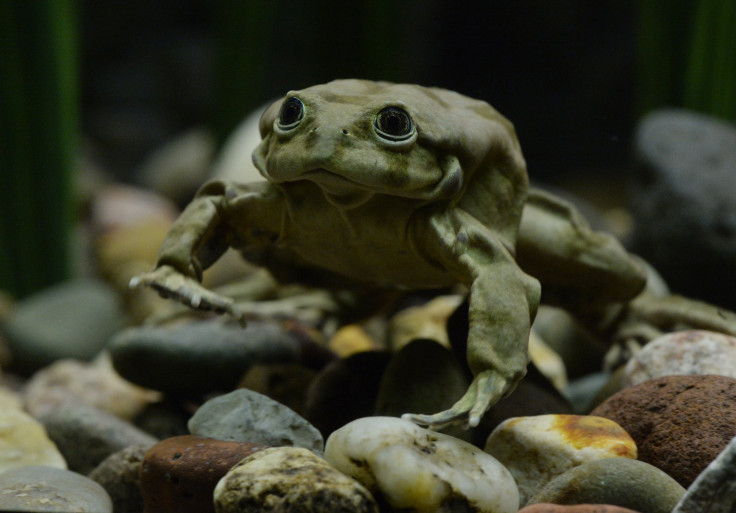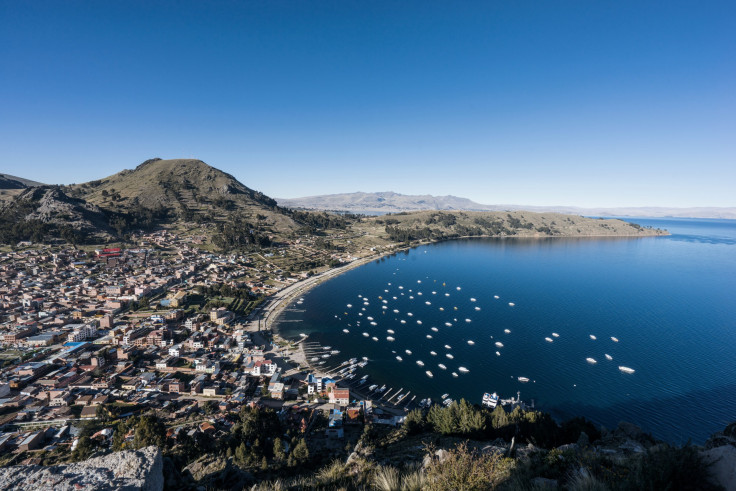Peru Officials Investigate Mysterious Deaths Of 10,000 Endangered 'Scrotum' Frogs

Locals in the small town of Puno, Peru are mourning the death of thousands of endangered frogs along the shores of Lake Titicaca. The Titicaca water frog, one of the largest aquatic frogs in the world, goes by a nickname of “scrotum frog” for its uniquely baggy skin.
An estimated 10,000 were found dead, along 30 miles of the Coata River, a tributary of Lake Titicaca. Local anti-pollution campaigner Maruja Inquilla Sucasaca was the first to spot the lifeless frogs and brought 200 into the center square of Puno, she told the Guardian. The National Forest and Wildlife Service of Peru (SERFOR) was then notified.
Sucasaca and the Committee Against the Pollution of the Coata River said Peruvian authorities haven't taken pollution problems in the lake seriously enough, AFP reported. For years, they say, the lake that borders Peru and Bolivia has been used as a dumping site by locals.
“Lake Titicaca used to be a paradise, now we can’t use the water, and our livestock die if they drink it,” Sucasaca told the Guardian. “Untreated sewage is being pumped into the lake from the big towns, and authorities don’t care.”

Once common in Lake Titicaca, the Titicaca frog population is critically endagered after having dropped by as much as 80 percent over the past few years, according to the IUCN Red List of Threatened Species. Scientists in the region were conducting necropsies and water sampling to find the exact cause of death.
Lake Titicaca is the largest lake in South America and home to more than 530 aquatic species. It’s unclear if the amphibian crisis will have an impact on Peru tourism, which saw over 3 million visitors in 2014.
© Copyright IBTimes 2024. All rights reserved.






















